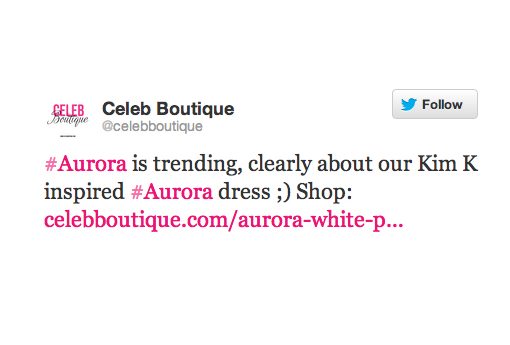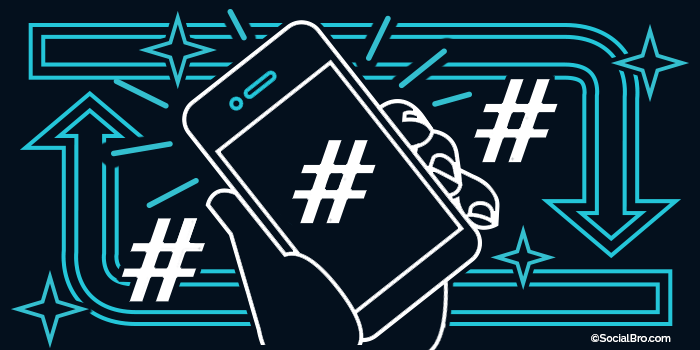3 types of hashtags for your social media marketing
At Super Bowl 2013, big businesses reaped the benefits of social media hashtags, with brand-related hashtags mentioned a whopping 300,000 times. That’s a 273% increase on the previous year! If you’re serious about creating successful social media marketing, hashtags should be an essential part of crafting your campaigns. It’s time to get clued up on brand-related hashtags. Here’s what you need to know about the 3 types of social media hashtags.
What kind of hashtag works best for your business?
There are three main types of hashtag for marketing:
1) Brand/campaign specific
2) Content
3) Trending
Brand Hashtags
Perfect brand hashtags have three key ingredients, they need to be concise, catchy and most importantly, be unique to the brand. KitKat and their chocolate fingers of happiness exemplify this. They converted their classic 50s slogan into the #HaveABreak hashtag. Keeping it short and oh-so-sweet means fans across the world can use the hashtag to share pics of their favorite snack on whatever social network they desire - whilst also making it super easy to search hashtags for the content you want. Brand hashtags are a permanent fixture and rarely change.
Ahhh… my KITKAT! #HaveAbreak #ArtBreak pic.twitter.com/yWF5pIg00i
— KITKAT (@KITKAT) August 28, 2013
Campaign hashtags are created specifically for a particular marketing campaign, intended to reinforce your campaign and brand. Campaign hashtags are often used to promote, but are also occasionally a way for consumers to unlock exclusive discounts or promotions just for being on Twitter. Dominos Pizza UK used a campaign hashtag well, when they launched #letsdolunch! The #letsdolunch hashtag ran from 9am to 11am in March 2012 and every single time somebody Tweeted the hashtag, the price of their Pepperoni Passion Pizza dropped by one pence. 85,000 Tweets later, a pizza for £15.99 could be purchased for £7.74. Delicious.
Domino's Tweet Treat has begun! Include #letsdolunch in your tweets to knock money of our Pep Passion. Full details http://t.co/kRe4OuOf
— Domino's Pizza UK (@Dominos_UK) March 5, 2012
Content Hashtags
Content hashtags are used for directly engaging a target audience. For example, if you’re a boutique coffee shop wanting to boost brand awareness, posting photos of your stunning latte art with the hashtags #latte #art #cupcake will draw in interested crowds. Sit back with your soy-triple-shot-mocha-hazelnut-frappuccino and watch the retweets roll in. Thanks to the flexibility of the hashtag, you hashtags will translate across networks if you share your post on multiple sites. Remember, DO NOT hashtag every single word.
In need of one these beauties this morning? #coffee #coffeelove #barista #latteart #flatwhite #morningfuel pic.twitter.com/ub2OJxBQTg
— Ue Coffee Roasters (@uecoffee) August 15, 2014
When using content hashtags, try to think like your customer. What are they interested in? What would appeal to them? In basic terms, descriptive hashtags work best. But what about a group of healthy individuals interested it fitness? What might they hashtag when they share photos of their workout routines and food? Finding out this information and tagging your Tweets appropriately will reach out to your target audience.
Last chance to enter!RT, Like&Share on FB to #WIN Upgraded PROMiXX & @GladiatorsArena vest #comp #gym #fitspo #fitfam pic.twitter.com/lEBAClWmSG
— PROMiXX (@promixx) August 18, 2014
Trending Hashtags
Trending hashtags are trickier. If you can segue into a trending topic without looking like a shameless spammer, go right ahead. Trend piggybacking can backfire, so make sure that the trending hashtag is related to your brand before you consider jumping in. Small UK business Celeb Boutique went down in flames after misunderstanding the #Aurora trend, which was actually about a tragic shooting in Aurora, Colorado. Do your homework before getting involved.
Hoping for an example of trending hashtags done right? Hellman’s, Pinkberry and Tropicana all managed to jump in on #NationalPicnicMonth without making themselves look ridiculous. Congrats on finding your niche trend guys!
Al fresco dining with tasty sandwiches & refreshing drinks? Sign us up! #NationalPicnicMonth pic.twitter.com/kNobTmo5H7
— Tropicana (@Tropicana) August 1, 2014
Celebrate #NationalPicnicMonth with a Pinkberry Pick Up Pack! It's perfect for a picnic with your bestie. pic.twitter.com/yxR7z44EFU
— Pinkberry (@PBerryDallas) August 12, 2014
Existential question: If you have a picnic without @Hellmanns, is it still a picnic? #NationalPicnicMonth pic.twitter.com/maMVMe9lmR
— Hellmann's (@Hellmanns) July 16, 2014
That’s the basics of what sort of hashtags you can use for marketing. If you’re looking for more tips on how to make sure your hashtags are performing at optimum level, check out our blog post on effectively using hashtags. Happy hashtagging!







